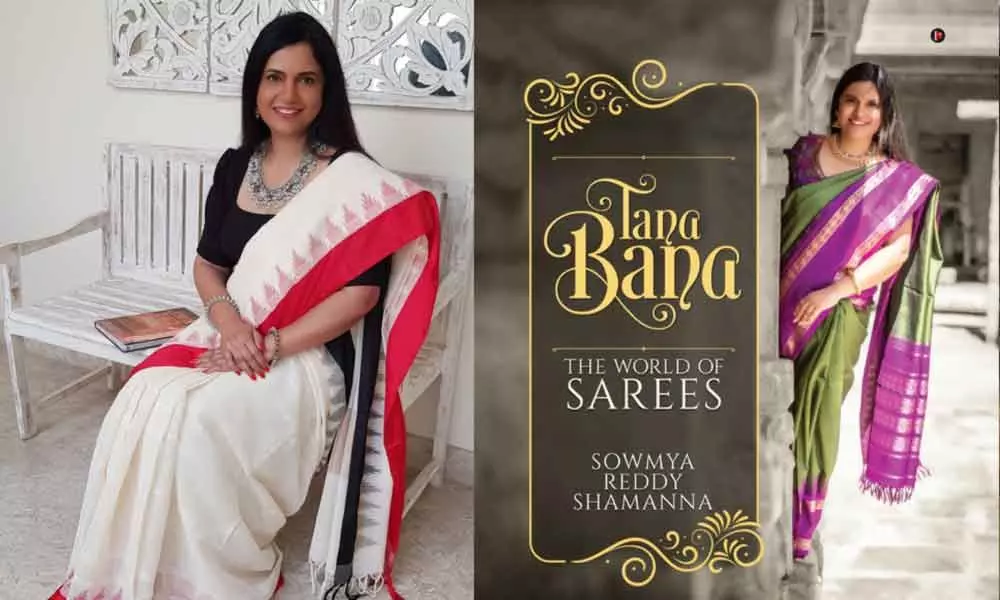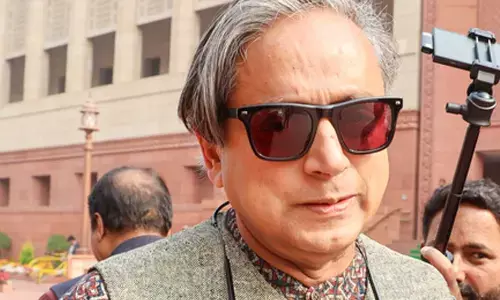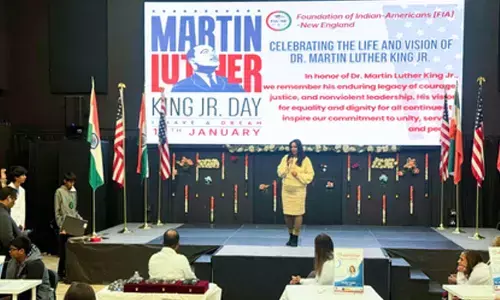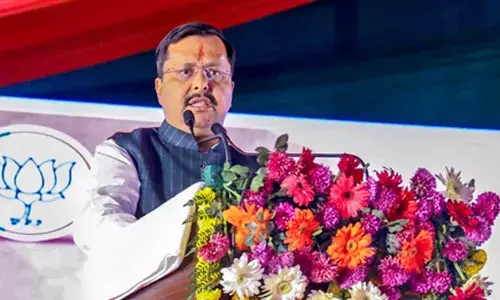The Saree Story

An avid handloom enthusiast Sowmya Reddy Shamanna, who lives in Germany, has put together a book on the saree - Tana Bana, the world of sarees.
An avid handloom enthusiast Sowmya Reddy Shamanna, who lives in Germany, has put together a book on the saree - Tana Bana, the world of sarees. "While planning the 150th-anniversary celebrations of Gandhiji, I felt that I could write a book on the craft heritage of sarees, which I thought was meaningful and relevant to highlight the celebrations. The idea was appreciated and supported by the Indian Consulate in Frankfurt, Germany and hence the book. All my research, compiling and writing was done in Germany which began about a year ago. For the pictures and images in the book, I came down to Bangalore and with the assistance of friends and cousins, we did a three-day photo-shoot; the images are from my personal collection of sarees," she shares.
Tell us about your book and what kind of research did you do for it?
Tana Bana is an easy comprehendible read that is sure to connect with saree enthusiasts the world over. Sarees represent the vital spirit of India, the cultural heritage, the variety and the memoirs of the nation. It also symbolises a common identity which subsumes the incredible mélange of designs and motifs, displaying the magic of being a seamless length of social fabric that takes on the individual character of its wearer. This book is a portrayal of traditional and contemporary sarees from the different regions of India. Every saree in the book, is an unspoken representation of the place and people who wove the masterpiece, the dyes and the motifs, aesthetics and distinctiveness that is exclusive to each of them.
What have been some of the interesting things that you have discovered about sarees while writing this book?
When one dives into an amazing world of sarees you cannot stop exploring, discovering and celebrating the six yards. Many eras and legends are woven into our sarees. Sarees tell the stories of a bygone era, of today and the augur of tomorrow. The world of sarees is like a story by the artisans and weavers. Sarees are living testimonies of the skill and deft talents of craftsmen. It is discovering the transformation of the humble cocoon and the cotton pods to fabric. I discovered for myself that sarees narrate the folklore of the people, their habitat, traditions and the flora and fauna that made them. The colours and the motifs on the sarees sing paeans to the seasons, the aesthetics in the motifs that embellish the body of the saree.
What are the different kinds of sarees that you talk about?
Sarees display the vastness and the rich diversity of Indian culture. Every state of India has a different artwork and varied weaves. A weaver from Bihar would bring forth an excellent Madhubani art on a saree, while the weavers from South India can weave excellent work on a Kanjeevaram silk saree. With unique painting, needlework and weaving design, each handcrafted saree is exclusive and different from the next. Of course, I would love to write about every weave but have limited myself to 50 ingenious sarees from different regions of India—the stunning kanjeevarams; the intricate ikats; the rustling ornate banarasis; the vibrant bandhanis; the precious patolas and many more.
What challenges did you face when writing the book?
Like in any venture or undertaking, the struggles and efforts are real. More so when it is your first attempt to write a book. You are incognizant of what exactly you want to compile into a book that would make it appealing and readable to the adults and millennials alike. Every weave had to be thoroughly researched and meticulously documented in a simple comprehendible way. Additionally, I did not have the privilege of time to spend in India to get things done in a leisurely manner. I have however put in my best effort given the time and circumstances.
Who or what inspires you?
The enrapturing beauty, artistry, craftsmanship of every handwoven saree amazes me and inspires me truly. My saree sisters inspire me especially Vijayalaxmi Chhabra, the former Director General of Doordarshan (India). She has a plethora of knowledge on the handloom weaves of India and has very eloquently taught me about various weaves, shared stories from her wardrobe which helped me to enrichen my knowledge.
What are your future plans?
I would love to see Indian handloom fabrics and textiles reaching out to the rest of world, where I can with pride say this is our craft heritage. I would also like to see the saree as a sartorial clothing in which a woman wears it with ease and a total lack of pretense. This is what we are all striving for in how we dress and how we live. Given an opportunity, I would also like to collaborate with establishments/organizations promoting and endorsing handloom sarees in a significant and meaningful way.














